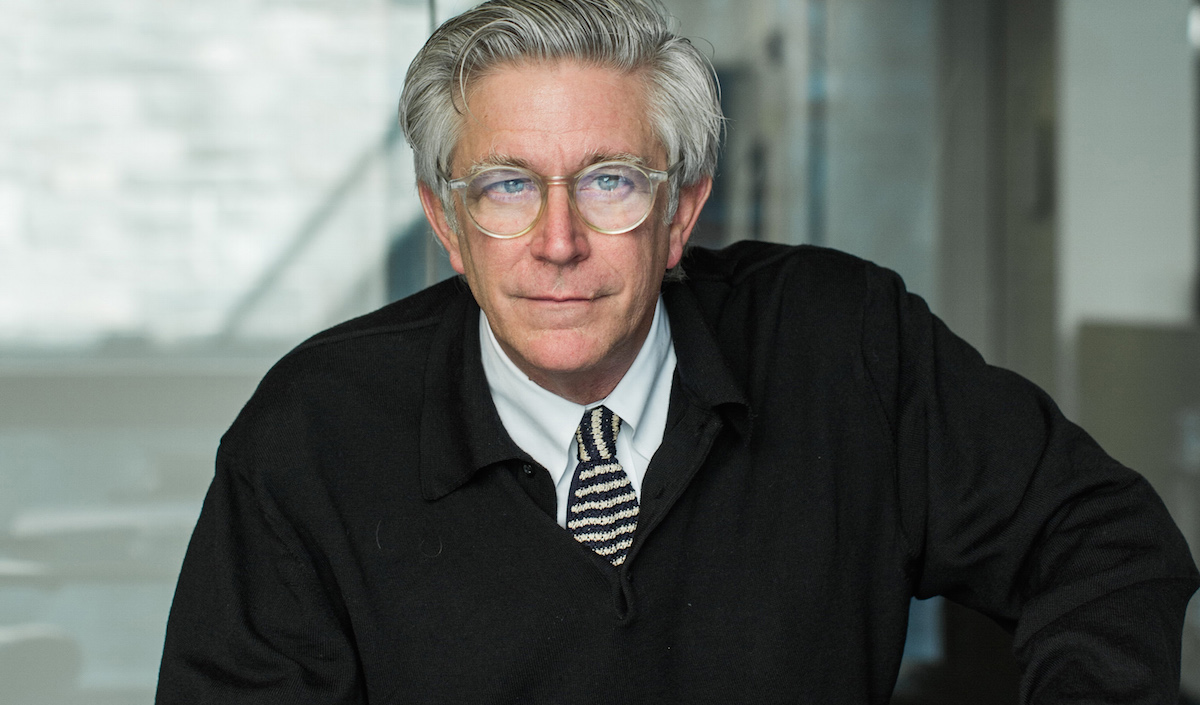Bill Hellmuth, AIA, officially took over as HOK’s Chief Executive Officer on April 19, with longtime CEO Patrick MacLeamy, FAIA, moving to chairman as part of a planned succession process that the firm first announced Jan. 25.
Hellmuth, who is based in the firm’s Washington, D.C., studio, has been HOK’s president since 2005. The firm will be led by a design principal for the first time since 1990, when Gyo Obata stepped down to assume the role of chairman. Hellmuth brings insight on managing the creative process—balancing the art and the business to generate the best design solutions and most value for clients. He will continue in his role as HOK’s firm-wide president and design principal for projects in the Washington, D.C., area and worldwide.
“Design excellence will define our future,” said Hellmuth. “I joined HOK in 1991 for the opportunity to be part of a practice that had the opportunity to do the best design work of its time. We’re now creating design solutions that address some of the world’s greatest challenges. We’ll continue broadening the scope of our creativity and problem solving and using design thinking to strengthen our design culture. This will continue to attract the best people and clients to HOK.”
Read more about Bill Hellmuth and his vision for the future of HOK in this Q+A profile.
HOK has current projects in 75 countries, and it has designed major urban plans, buildings and interior environments. Current and recent projects include the 80-story Capital Market Authority Tower in Riyadh, Saudi Arabia; the Porsche Cars North America Experience Center and Headquarters in Atlanta; the Anaheim Regional Transportation Intermodal Center (ARTIC) in Anaheim, California; and Mercedes-Benz Stadium in Atlanta.
HOK is a global design, architecture, engineering and planning firm with 24 offices worldwide. DesignIntelligence consistently ranks HOK as a leader in sustainable, high-performance design and technology innovation.
Related Stories
| Dec 28, 2014
10 key design interventions for a healthier, happier, and more productive workplace
Numerous studies and mountains of evidence confirm what common sense has long suggested: healthy, happier workers are more productive, more likely to collaborate with colleagues, and more likely to innovate in ways that benefit the bottom line, writes Gensler's Kirsten Ritchie.
| Dec 28, 2014
7 fresh retail design strategies
Generic ‘boxes’ and indifferent service won’t cut it with today’s savvy shoppers. Retailers are seeking a technology-rich-but-handmade vibe, plus greater speed to market and adaptability.
| Dec 28, 2014
Workplace design trends: Make way for the Millennials
Driven by changing work styles, mobile technology, and the growing presence of Millennials, today’s workplaces are changing, mostly for the better. We examine the top office design trends.
| Dec 28, 2014
AIA: Commercial glass façade and door systems
When it comes to selecting fenestration systems—particularly glass facades and door systems—a number of factors come into play, requiring a thorough evaluation of a project’s individual requirements.
| Dec 28, 2014
10 essential habits of successful architects
Want to take the next step as a design processional? John Gresko, Senior Project Architect with HDR, explores the traits that many great architects possess.
| Dec 28, 2014
10 unglamorous things architects do
An acquaintance recently asked me about the kinds of things I did on a day-to-day basis at work, anticipating a response loaded with enviable activities. She was wrong, writes HDR's John Gresko.
| Dec 28, 2014
New trends in ceiling designs and materials [AIA course]
A broad array of new and improved ceiling products offers designers everything from superior acoustics and closed-loop, recycled content to eased integration with lighting systems, HVAC diffusers, fire sprinkler heads, and other overhead problems. This course describes how Building Teams are exploring ways to go beyond the treatment of ceilings as white, monolithic planes.
| Dec 27, 2014
7 ways to enhance workplace mobility
The open work environment has allowed owners to house more employees in smaller spaces, minimizing the required real estate and capital costs. But, what about all of their wireless devices?
| Dec 27, 2014
'Core-first' construction technique cuts costs, saves time on NYC high-rise project
When Plaza Construction first introduced the concept of "core first" in managing the construction of a major office building, the procedure of pouring concrete prior to erecting a steel frame had never been done in New York City.
| Dec 23, 2014
5 tech trends transforming BIM/VDC
From energy modeling on the fly to prefabrication of building systems, these advancements are potential game changers for AEC firms that are serious about building information modeling.

















